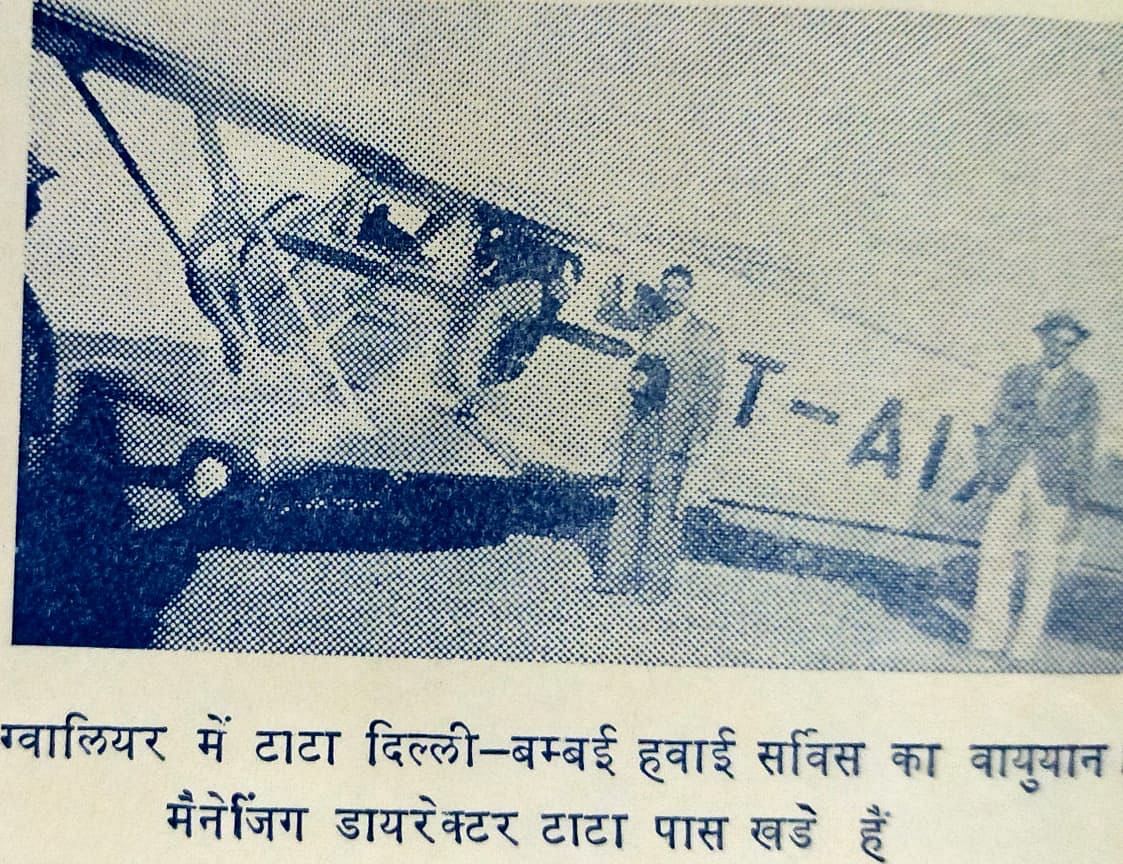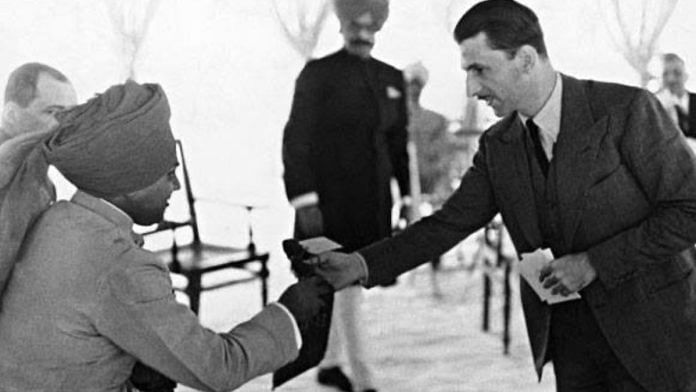A recurrence in the treasure of world poetry is the desideration of poets “to fly like a bird and swim like a fish”, while the poets reflected on it, the scientists made it happen. The history of aviation includes the perceived madness of visionaries and innovations that made the world a real global village.
Flight of development
India is a vast country and pre-independence undivided India was even bigger. Civil aviation was an answer to the slow transportation system. But how this would happen was the question.
Maharajas of India played an important role in the development of aviation in India, along with industrialists like Tatas. Amongst the maharajas, Scindias of Gwalior held a special place. Firstly because they started very early, and secondly because they did not keep aviation just as a royal hobby and preserve of the colonial rulers and other Indian aristocrats. Rather they made it a plausible faster alternative to traditional transportation mediums like railways that they had helped develop with much alacrity from 1872 onwards. The gradual democratisation of elite transportation is a historic legacy of the Scindias of Gwalior and has been immortalised in newspapers like Jayaji Pratap.
“In the 1920s, the state of Jaipur, from where our family hails, had a revenue of about Rs 1 crore. Gwalior’s revenue was approximately Rs 3 crore; by that standard Gwalior was a ‘big’ state. Madho Maharaja [Maharaja Madho Rao Scindia I] was an enlightened ruler,” wrote late industrialist Krishna Kumar Birla in his autobiography Brushes with History.

JRD Tata flew an airplane to the Scindia capital Gwalior to kick off the airmail service. | Image Credits: Scindia Research Centre
Birla made an accurate observation, the Scindia state was indeed very big, and the infrastructure they developed has been appreciated by several scholars. Madho Rao Scindia was very interested in the discipline of aviation, and keeping in mind the importance of his kingdom in South Asia, he decided to fight the Central Powers in the First World War through air power. In January 1915 he sent four aeroplanes, two for Egypt and one each for East Africa and the Persian Gulf, all armoured and mounted with guns, wrote Mohammad Rafiullah in Gwalior’s Part in the Great War. He also decided to develop civil aviation in his kingdom, as fast as he could, and his son Maharaja Jiwajirao M Scindia carried forward his vision and executed it.
Also read: Did the Scindias betray India? The 1857 revolt and the ‘truth’ in Congress’ jibe
Scindia state aviation
Scindia’s administration developed an airport on the shore of the Madho Sagar Lake, according to Gwalior Today published in 1940. It included a landing jetty, a test-house for passengers, a colony to house then airforce officers, Imperial Airways officials, Burmah Shell Ltd. employees, a wireless station designed to aid incoming aircraft, and a fully equipped meteorological station.
All modern amenities such as electric light and fans, telephones, drainage and water were provided and the road connecting Madho Sagar to Lashkar in Gwalior was improved for fast traffic.
Maharajpur Aerodrome was constructed six miles to the northeast of Lashkar. At night a powerful light beacon, high up on the grand Gwalior Fort, signalled the letter “G” for the guidance of aircraft.
These arrangements had put Gwalior on the air map of India and the world, bringing a large part of central India into contact with the rest of the country and international air routes. Bombay, Calcutta, Delhi and Karachi were reachable in a few hours.

JRD Tata thanked Jiwajirao M Scindia for his proactive approach towards the development of civil aviation in India. In 1937, JRD Tata and Nevill Vincent piloted a Waco YQC-6 biplane VT-AIX on the first airmail service between Gwalior and Bombay. Tata Airlines started operating Delhi to Bombay air service via Gwalior on Mondays and Thursdays, and Bombay to Delhi via Gwalior on Wednesdays and Fridays.
This service was made possible by subsidies and aerodrome facilities from Gwalior, Bhopal and Indore.
Not just this Australia and England were connected by air services to Gwalior during the reign of the Scindias. Even Deccan Airways operated a Madras-Hyderabad-Nagpur-Bhopal-Gwalior-Delhi route. This princely legacy was deeply appreciated by his son, the last Maharaja of Gwalior Madhavrao Jiwajirao Scindia.
Also read: India’s aviation industry has no cycles of boom or bust. It’s constant headwinds, tailwinds
Scindias as ministers
Madhavrao J Scindia was an avid traveller. He appreciated exceptional developments in the transport sector and tried to replicate them in India be it railways or airways. As the Union minister of civil aviation between 1991-93, Scindia wanted to break Indian skies free from the shackles of government apathy and lethargy and ensure a truly open sky. He was willing to encourage anybody with financial means and prowess who appeared capable of launching a credible domestic airline. Scindia ensured that there would be no bias towards Indian Airlines by the government, it would have to compete with private carriers in the open market. More options had to be provided to customers. He took to repeal the Air Corporation Act of 1953, which would legally allow private airlines to operate.

His policies gave a boost to the private sector and gave options to customers. The policy of least interference has been carried forward even today by the privatisation of the “Maharaja” of aviation — Air India, which had accumulated huge losses. The success of private airlines and the reduction in the cost of air travel is in fact the result of the vision of Madhav Rao Scindia.
He wanted all of the country’s airports to be developed, not just the five international airports — in Delhi, Mumbai, Chennai, Kolkata, and Hyderabad — that were termed “islands of excellence”.
His son, Jyotiraditya M Scindia, who heads the ministry now, understood his teachings rather well. The connection of the Scindias of Gwalior, with civil aviation continues with him.
Under his stewardship, India is the third-largest domestic aviation market. From successfully implementing the Udan scheme and launching Udan 5.1 scheme for helicopter routes to introducing Digi Yatra at the airports in Delhi, Bengaluru, Varanasi, Hyderabad, Kolkata, Pune and Vijayawada, his actions have been met with tremendous appreciation by air travellers. Scindia’s action for the decongestion of the Delhi airport has shown positive results, and the data show that he has led the recovery of the Indian civil aviation sector after the Covid-19 pandemic quite successfully.
Arunansh B Goswami is the head of the Scindia Research Centre. Views are personal.
(Edited by Theres Sudeep)



